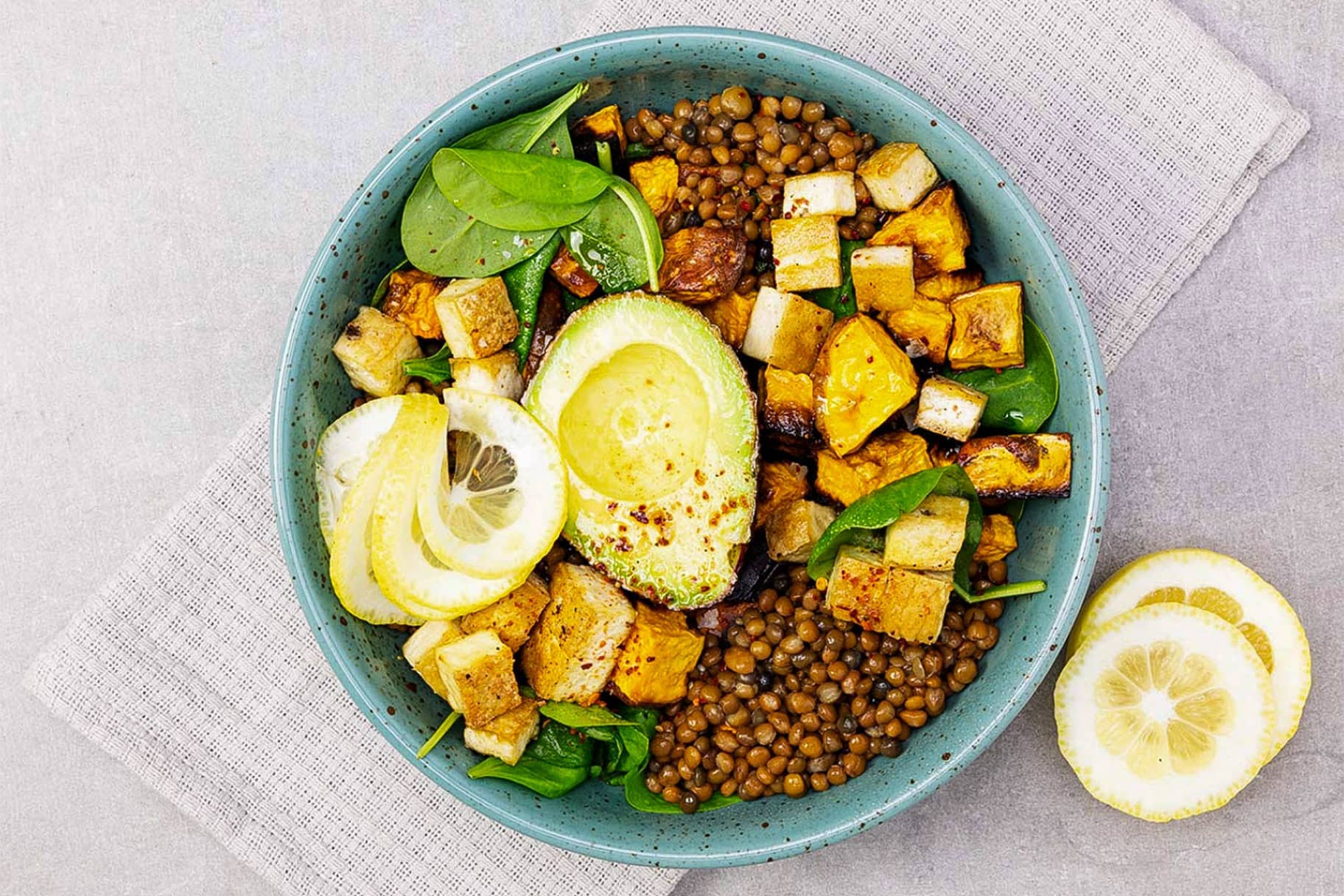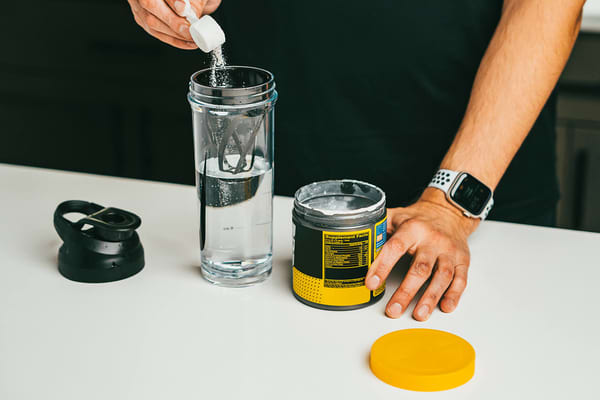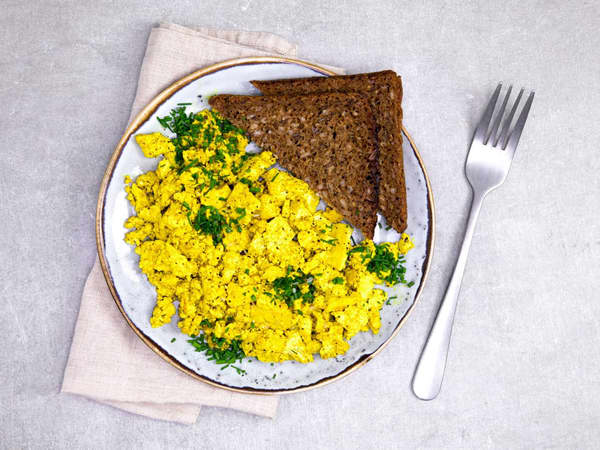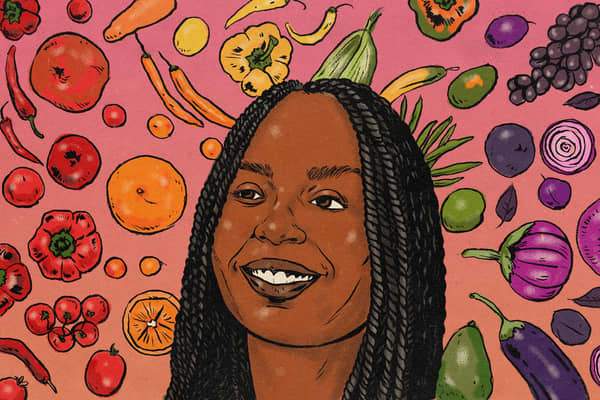Bulking vs. Cutting: Everything You Need to Know
Nutrition
Body composition changes may be one more variable worth tweaking to improve athletic performance.

For many sports, even minor variations in weight and body composition can make a difference in terms of performance, endurance and competition category.
For example, many boxing divisions are around a 3kg range, so if you're looking to move from super middleweight to light heavyweight, even a couple of kilos could take you there. The same goes for wrestling, combat sports like MMA, powerlifting and bodybuilding. Even without a specific weight target, some athletes find that body composition—which means the percentage of fat, bone and muscle—can help with aerodynamics in activities such as swimming and cycling.
Here lies the value of bulking vs. cutting. Bulking is known as the muscle-building stage, which calls for eating more calories than you burn, coupled with intense weight training for a set period of time. Then there's cutting—the phase where you cut back on calories in an effort to shed body fat while maintaining muscle mass to the best of your ability.
Playing around with body composition may be helpful if you're interested in switching up your competitive advantages, or simply want to see if the strategy helps your overall performance, regardless of the sport or activity.
RELATED: What Are the Best Foods for Bulking?
In terms of the best approach to do this in a thoughtful (and healthy) way, bulking and cutting can offer some structure, according to Kacie Vavrek, M.S., R.D., a sports nutritionist at The Ohio State University Wexner Medical Center. Although these terms are usually associated with bodybuilders, the type of tactics they use can apply to any fitness endeavour.
"You don't need to be a bodybuilder to bulk or cut", she says. "Any recreational gym-goer can bulk or cut, it's just a matter of adjusting calorie intake and ensuring nutrient needs are met in combination with exercise tailored to those specific goals".
Pro Tip: Think Body Fat Percentage Over the Number on the Scale
Although sports such as boxing or wrestling use scale weight for competition, the better strategy when looking at everyday performance is body composition, says Vavrek. Instead of simply adding or losing weight, the focus will be on increasing muscle mass and lowering body fat percentage.
Here's why: if you cut calories as a way to drop pounds quickly, you might achieve your goal, but you're much more likely to lose valuable muscle mass as well. That can set you up for a range of problems, Vavrek says, including weakness, fatigue, decreased performance and higher injury risk.
Plus, if you gain back those pounds—a very common scenario—it'll probably be in the form of fat, not muscle. This can increase the amount of visceral fat (fat that is stored deep inside the belly), which is linked to increased inflammation, insulin resistance and cardiovascular issues, says William Li, M.D., author of Eat to Beat Disease: The New Science of How Your Body Can Heal Itself.
"The type of weight cycling we see done through calorie cutting, especially dramatic calorie reduction, is very problematic—even if it results in 'success' as defined by weight loss", he explains. "A better focus is to build muscle, through strategic nutrition choices as well as exercise like strength training. That's what creates better body composition."
Don't miss Try These Six Yoga Poses to Boost Strength!

How to Bulk Correctly
Remember, when you bulk, the main goal is to consume a surplus of calories as a way to build muscle and increase strength. Vavrek suggests adding about 300–500 calories per day above your needs to provide a calorie surplus, while also emphasising resistance training to maximise muscle gain. Progress should be gradual, she adds, usually about 0.2–1kg per week.
Calories provide the energy and recovery needed as you boost strain on your muscles from resistance training. If you don't have enough calories for the job, you risk breaking down fat and muscle during training instead. If it's the strength training component that you're missing, you're simply eating more calories and not using them. Remember, bulking is all about the combo of higher calories from healthy food sources plus training that stresses your muscles enough to grow.
"Another part of bulking is to make sure protein intake is adequate to support muscle building", she suggests. That means aiming for about 1.6–2.2 grams of protein for each kilo of body weight. If you're following all these rules but not seeing results, she recommends gradually increasing your weekly calories by about 100–200 calories.
"One common misstep is that, when attempting to bulk, an athlete can add too many calories too quickly, and that can result in an excessive increase in body fat", she says. "That may make an athlete feel sluggish and can decrease athletic performance. In addition, if excess calories come from less healthy foods like saturated fat and sugar, an athlete may experience increases in cholesterol or blood sugar levels, which can increase risk of chronic disease".
So what should you eat to bulk properly? Nutrient-dense foods that are high in unsaturated fats are an ideal choice, according to Amanda Kostro Miller, R.D., specialist in sports nutrition. Some examples include:
· Nuts and seeds
· Oily fish
· Wholegrains
· Healthy fats
· Starchy vegetables
· Lean protein meats
Some of the best healthy, nutritious foods to help you bulk up might be sweet potatoes, salmon, avocado, brown rice and chicken, says Miller.
"Foods like these are nutrient dense and calorie dense", she says. "They also give you a range of vitamins, minerals and fibre that support your health overall".
Here's How to Cut in a Healthy Way
Not surprisingly, cutting involves going in the other direction towards a calorie deficit as a way to lose body fat, but in a way that maintains as much muscle mass as possible, says Vavrek. To do this, she suggests decreasing calorie intake to 300–500 calories less than daily calorie burn.
"To maintain muscle mass during the cutting phase, it's advised to keep protein on the higher range and spread protein intake throughout the day, including snacks with protein", she says. Like bulking, cutting should be gradual, with a goal of 0.2–1kg lost per week. Activity should be different as well, she adds. Cutting tends to be most effective with increases in cardiovascular exercise, rather than strength training.
When it comes to common missteps, that's also similar to bulking, but in this case, instead of eating too many calories, you could be in danger of eating too few.
"While attempting to cut, an athlete can often reduce calories too low and create too much of a calorie deficit", she says. "That can lead to muscle loss as well as decreases in bone density. Athletes in too much of a calorie deficit may feel tired, hungry, experience poor sleep quality, and see a negative impact on concentration and mood".
Maintaining energy is one of the most challenging aspects of cutting, adds Miller. That's why it can often take more experimentation with foods and activity levels in a cutting phase, so you continue to feel energised while still reducing body fat. Healthy carbohydrates can help, she says, including fruit, vegetables, low-fat dairy and legumes.
RELATED: What Should I Eat Before and After a Workout?
"Seasonal produce, in particular, is beneficial because it will give you plenty of micronutrients, antioxidants and fibre, all for minimal calories", she says. "Like bulking, you want to concentrate on nutrient density, not just calories".
If you're new to bulking and cutting, consider consulting with your primary care provider or a registered dietitian before you start to make sure it's safe for you.
The Bottom Line
Whether you're bulking or cutting, keeping a log of what seems to be working and what doesn't can be helpful, adds Miller. Also consider getting a scale that shows body fat percentage as well as scale weight—one caveat is that these are not as accurate as a more professional scanner you might find at a doctor's surgery or gym, but they do give you a rough idea of progress.
Finally, consider getting input from a dietitian, particularly one specialising in sports nutrition, especially if you feel your efforts aren't making much of a difference. A nutrition professional may be able to spot missteps in terms of your calorie counts or macronutrients (macros) and get you on a better plan.
It may be wise to view the bulking and cutting effort as just one variable in your training that's worth exploring. Most importantly, be diligent about eating enough calories while working out—even during the cutting phase—to avoid injury and stay energised.
For more expert-backed nutrition tips, be sure to download the Nike Training Club App!
Story written by Elizabeth Millard





